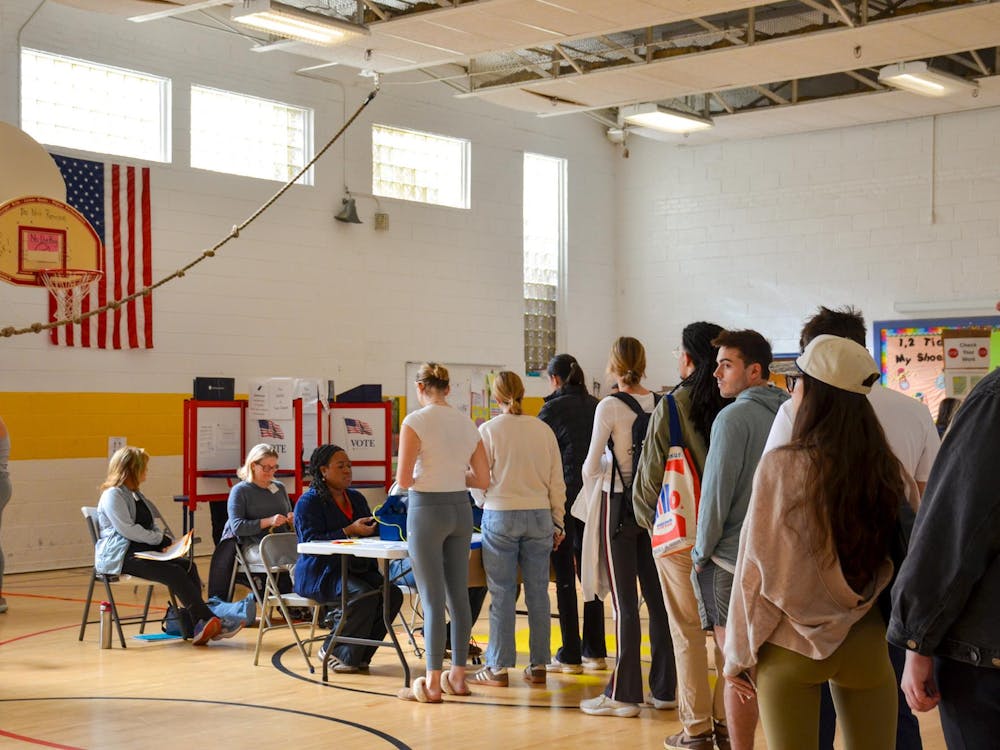University Architecture students involved in a neighborhood planning course gave a presentation yesterday about foreclosure and property decay to representatives from the City of Charlottesville, Piedmont Housing Alliance and other local organizations.
Second-year Architecture graduate student Adam Lovelady said the project, whose participants are all affiliated with the Architecture School’s urban and environmental planning department, was divided into four themes, each of which involved a different group of students: “Identifying Priority Areas,” “Correlating Blight and Prevention,” “Forecasting Foreclosures” and “Increasing Financial Literacy.”
In discussing the methods used for the project’s data collection and analysis, fourth-year Architecture student Laura Hammett, who is also a Cavalier Daily production editor, noted that the initial data on foreclosures were collected from foreclosures.com, Piedmont Housing Alliance’s foreclosure data and The Daily Progress newspaper. This data, Hammett said, was analyzed according to demographics, time, finances and housing quality and then used to make policy suggestions.
When speaking of the motivation behind the project, Lovelady said as a class the workshop members were interested in seeing how the larger foreclosure crisis affects Charlottesville itself.
“Obviously you see the headlines of [areas] that have drastic numbers of foreclosures,” Lovelady said, noting that it is “easy to think of Charlottesville as isolated from this.”
Lovelady said Charlottesville is not isolated from the foreclosure crisis, especially when considering issues such as neighborhood foreclosures.
Fourth-year Architecture student Ahnivah Williams, who worked on the project’s first theme of identifying priority areas, said the Charlottesville locations recognized by the group as most in need of redevelopment funds were Fifeville, Fry’s Spring and Ridge Street. She explained that these areas had the greatest percentage of home foreclosures, the highest percentage of subprime mortgages and/or a likelihood of experiencing a significant increase in the rate of home foreclosures.
These three areas could file applications for grants from the U.S. Department of Housing and Urban Development’s Neighborhood Stabilization Program, fourth-year Architecture student Melissa Reese said. She noted, however, that it is uncertain whether the areas actually could receive the grants.
Hammett and Charlottesville Mayor Dave Norris said the NSP requires that areas receiving grants must have a foreclosure rate of 10 percent or higher. Charlottesville itself has a foreclosure rate of 0.5 percent, fourth-year Architecture student Sarah Bridger said, but having the critical areas within Charlottesville apply individually for NSP assistance might bypass this restriction if the foreclosure rates — which as of this year are all below 3 percent — increase.
The second theme of correlating blight and prevention, fourth-year Architecture student Alicia Rabadan said, deals with the issue of preventing decaying properties from negatively affecting their surroundings. Rabadan explained that the motivation for this part of the project was a perception that “blighted” properties not only damage aesthetics but also encourage further deterioration of and damage to property in the surrounding area. This in turn may lead to less community development, more crime and other issues that would reduce the quality of life in affected neighborhoods, Rabadan said.
Currently, the city’s policy on properties experiencing such deterioration is to receive reports from residents, conduct a series of public hearings involving the owner and then raise the possibility of the city acquiring, renovating and reselling the property, Rabadan and Norris said.
Despite this possibility, acquisition of blighted property is a last-resort option, Norris said.
“There’s been one occasion, only one, when I’ve been on [Charlottesville] City Council when we’ve had to initiate a seizure of property,” Norris said, noting that once the seizure was initiated, it did not have to be carried through, because the owner complied with the city’s orders to repair his property.
With this in mind, Rabadan said, the group that addressed the second theme recommended that Charlottesville adopt an anti-blight ordinance that punishes violators before threatening them with a public acquisition of their property.
The group that studied the topic of forecasting foreclosures saw several trends, including an 89-percent increase in foreclosures since 2006, the fact that 56.8 percent of foreclosed loans are adjustable rate mortgages and that 62.5 percent of home loans in Virginia are adjustable rate mortgages, Bridger said. Some financial analysts have argued against adjustable rate mortgages, noting that some consumers who enter into a low interest rate loan later find themselves unable to repay the loan should the interest rate rise.
“The good news is that the number of ARMs and subprime loans originating is decreasing, but many of them are soon to reset,” Bridger said.
In light of this, the group proposed to create a local partnership including the city, the Piedmont Housing Alliance, local nonprofits and lending institutions to connect affected or at-risk individuals with foreclosure information, Bridger said. She explained that this could be aided by neighborhood early warning systems, improved online materials and publicity regarding national hotlines.
The group studying the fourth theme of increasing financial literacy proposed a collaboration between the Piedmont Housing Alliance and the city to increase financial education efforts on various levels, especially in primary, secondary and adult education, fourth-year Architecture student Hedieh Fakhriyazdi said. She cited a number of programs across the country designed to accomplish such goals, noting that it is “crucial to tackle foreclosure before it expands.”
For primary and secondary education, Fakhriyazdi said, the city could implement a curriculum that requires students to demonstrate sufficient financial literacy to graduate from high school. At the adult level, she listed group suggestions such as increasing access to financial literary resources and holding required workshops on the issue.
PHA Executive Director Stuart Armstrong, who is also chairman of the Nelson County School Board, explained that financial literacy is taught in Virginia public schools but only in passing during regular courses required by the Standards of Learning. Because of this, Armstrong said, the current challenge is to make financial literacy a stand-alone program that is required in its own right.
Norris, who expressed his view that the presenters “did a wonderful job,” particularly emphasized the importance of preventative strategy.
“We can’t be complacent,” Norris said in reference to the city’s relatively low rate of foreclosure. “It’s not over yet.”






